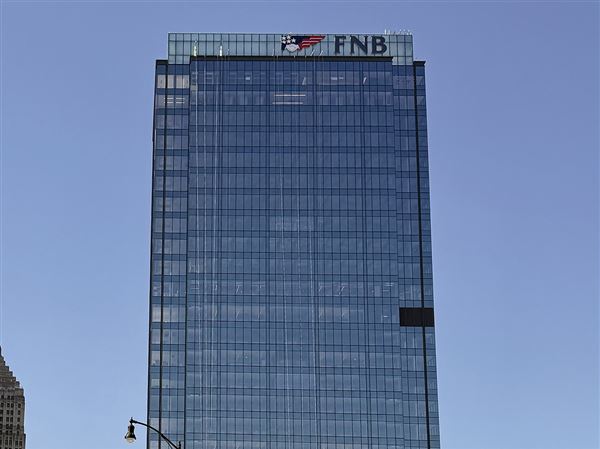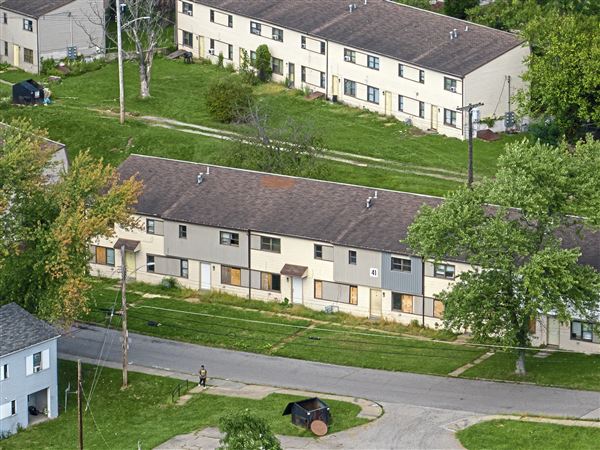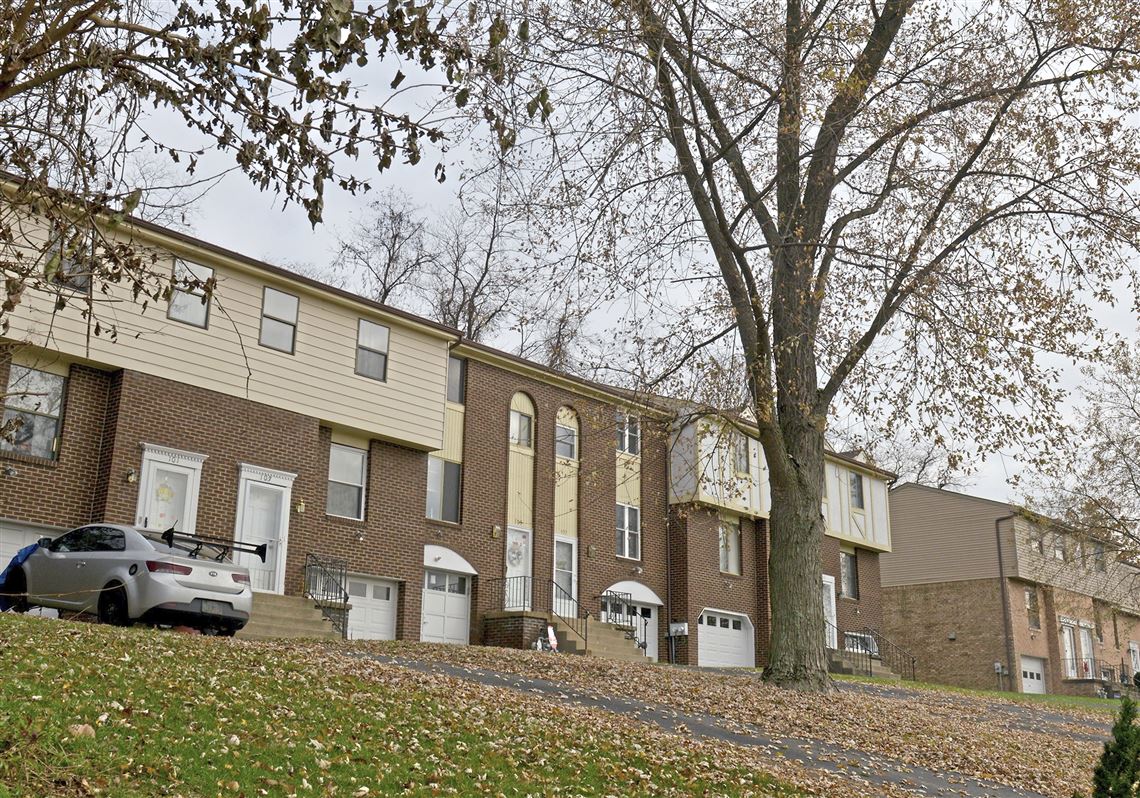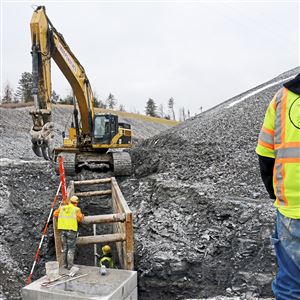It was 37 years ago, but Patricia Pilisausky remembers receiving her first notice that her West Mifflin townhouse would be in the path of the Mon-Fayette Expressway.
In the years since that 1980 notification from the Pennsylvania Department of Transportation, the project has had many starts and stops, including shifting from PennDOT to the Pennsylvania Turnpike Commission, but the path through Village Lane and its 43 residences has remained consistent.
For Ms. Pilisausky and her neighbors, though, the communication from official sources hasn’t kept up. They’re bothered that two weeks ago the commission extended design contracts for the first phase of the project, which could begin in 2020, and they haven’t heard anything official since August 2016, when they were invited to a meeting to see scaled-down plans for the $2.1 billion extension from Jefferson Hills to Monroeville.
“That’s the thing that gets me is they don’t communicate,” Ms. Pilisausky said as she sat in the living room of her two-bedroom home with 5-year-old Priscilla, an old English pocket beagle, on her lap.
“This off-on, off-on is frustrating. I’d like to get new carpet in here but i don’t want to spend the money if I’m going to have to move.”
Turnpike officials say they understand the uneasiness for residents like Ms. Pilisausky, but they say their hands are tied until federal officials approve a revised environmental impact statement for the project late next spring or early summer. Once that happens, the agency will take a fast-track approach to buy some 200 properties in the path of the first 8-mile section of the highway — many of them residences — and Village Lane residents will be near the top of the list.
“All I can offer at this point is that as we sit here today the plan is that we will be moving the process for those folks first,” said Jeanmarie McLaughlin, the turnpike’s assistant counsel. “Next spring-summer, they will become our priority.”
The proposed extension of the highway from Jefferson Hills has been stalled since the turn of the century, when plans called for a Y-shaped extension with one branch to the Parkway East in Monroeville and the other to Downtown Pittsburgh following the Oakland side of the Monongahela River. That plan faced opposition from the city and a lack of funding.
With the passage of a new transportation funding bill in 2013, the turnpike revived the project. But the scaled-down version eliminated the branch to Pittsburgh and sharply reduced the footprint to Monroeville by scaling back wide medians.
Revised plans, which would cut the cost of the project to about $2.1 billion, are awaiting federal approval.
If the plans pass muster, the commission expects to begin construction with an 8-mile segment from Jefferson Hills to Duquesne at a projected cost of $903 million. The work will begin in 2020 or 2021 with elements that don’t require much property acquisition, such as bridges on Route 885 near Clairton and at the Jefferson Hills interchange at Route 51.
The 8-mile section will take as long as six years to complete and none of it will open until it’s all done.
Ms. McLaughlin said the property acquisition process will be “the greatest challenge” for this project because of the high number of residents who will be displaced. The concern is that some 200 people will come into the housing market at the same time, probably limiting the options available and raising the prices to buy a new home.
By comparison, the agency acquired less property for a 13-mile segment of the Southern Beltway in western Allegheny and northern Washington counties.
“We’re trying to move these people early, early in the process,” said Ms. McLaughlin, who drove through the area last week to get a better idea of what properties will be taken and what might be available for families that have to relocate. “We want to make sure there’s time so they won’t feel rushed.”
The process will begin with a public meeting to show the revised plans. Then, the turnpike’s two consultants will appraise the market value of each property and recommend a replacement housing supplement to help cover escalating prices since owners purchased their current home.
Then, the turnpike will make a purchase offer. The owner can accept the offer or try to negotiate a better price. If they reach a deal, owners begin looking for a new place to live anywhere they choose. If not, the commission can take the property by eminent domain.
When a resident is ready to move, the turnpike will pay what it deems reasonable moving costs as well.
So far, the turnpike has acquired two industrial properties that Ms. McLaughlin described as "conveniently available": a former Rochez Co. parcel in Jefferson Hills for $1,275,000 and 174 acres in West Mifflin for $875,000.
Ms. Pilisausky said she isn’t looking forward to the acquisition process or moving. She moved into the townshouse as a renter with her mother in the mid 1970s and bought the unit when it became available in 1981.
The highway is expected to cut through the first and last buildings on the crescent-shaped Village Lane but the whole complex will be taken because the highway will cut off access from Camp Hollow Road, a stone’s throw from Allegheny County Airport.
After her mother passed away, Ms. Pilisausky stayed in the quiet neighborhood where her back porch overlooks a wooded valley busy with birds and deer. She retired five years ago as a technologist in the radiation department at UPMC Mercy.
And now she worries about things like when to have hand surgery early next year so it won’t interfere with attending turnpike meetings and whether her bad knee will hold up until the move happens and whether the turnpike will pay enough for her to find similar housing.
“”I don’t have a mortgage and I don’t want a mortgage,” she said. “I planned my life so I wouldn’t have that anymore. The thought of moving after more than 30 years is scary.
“They’re buying a house, but this is my home. Are they going to pay me for that? I think it’s the unknown about all this that gets me upset.”
Ed Blazina: eblazina@post-gazette.com, 412-263-1470 or on Twitter @EdBlazina.
First Published: November 22, 2017, 8:16 p.m.

















